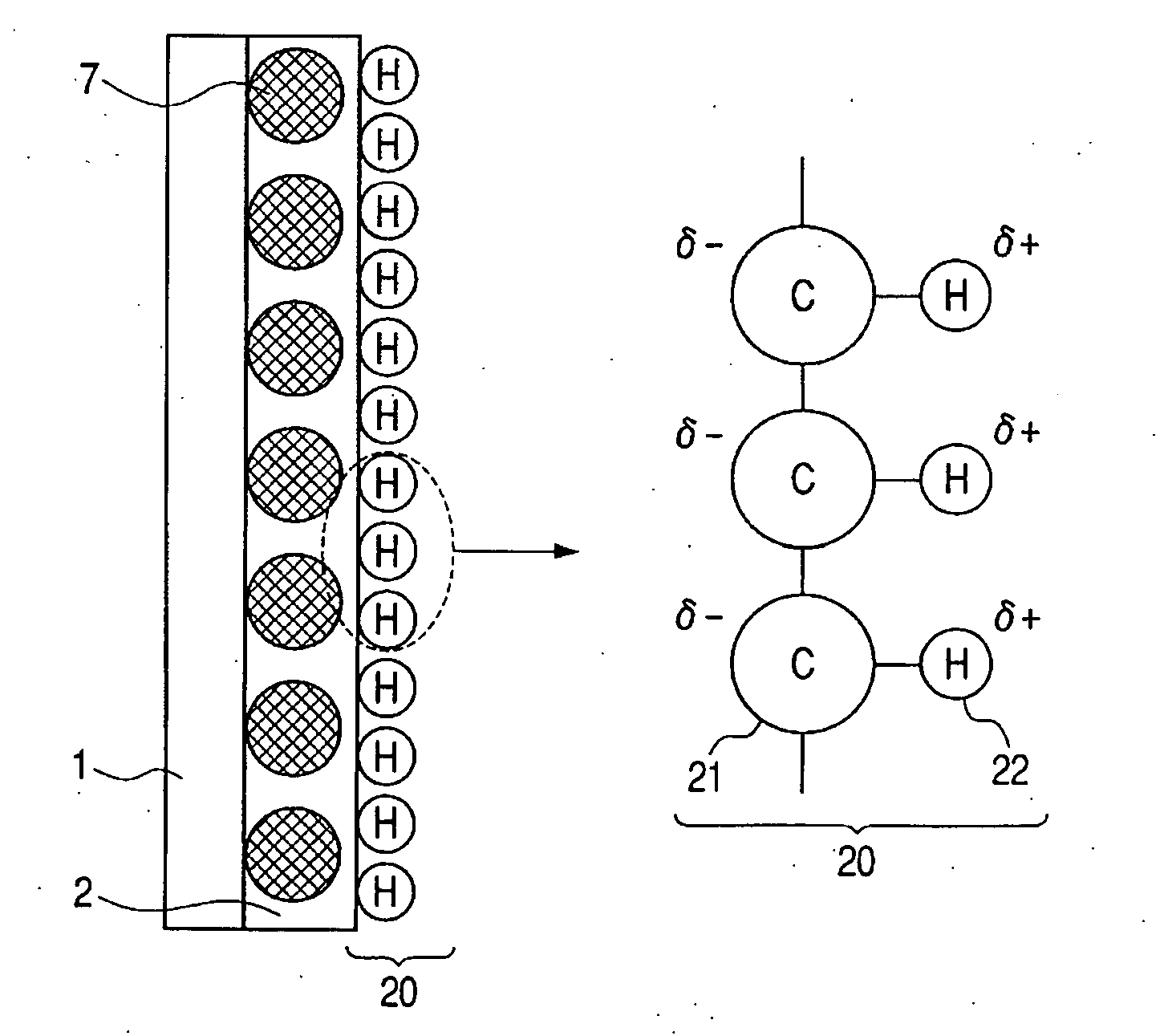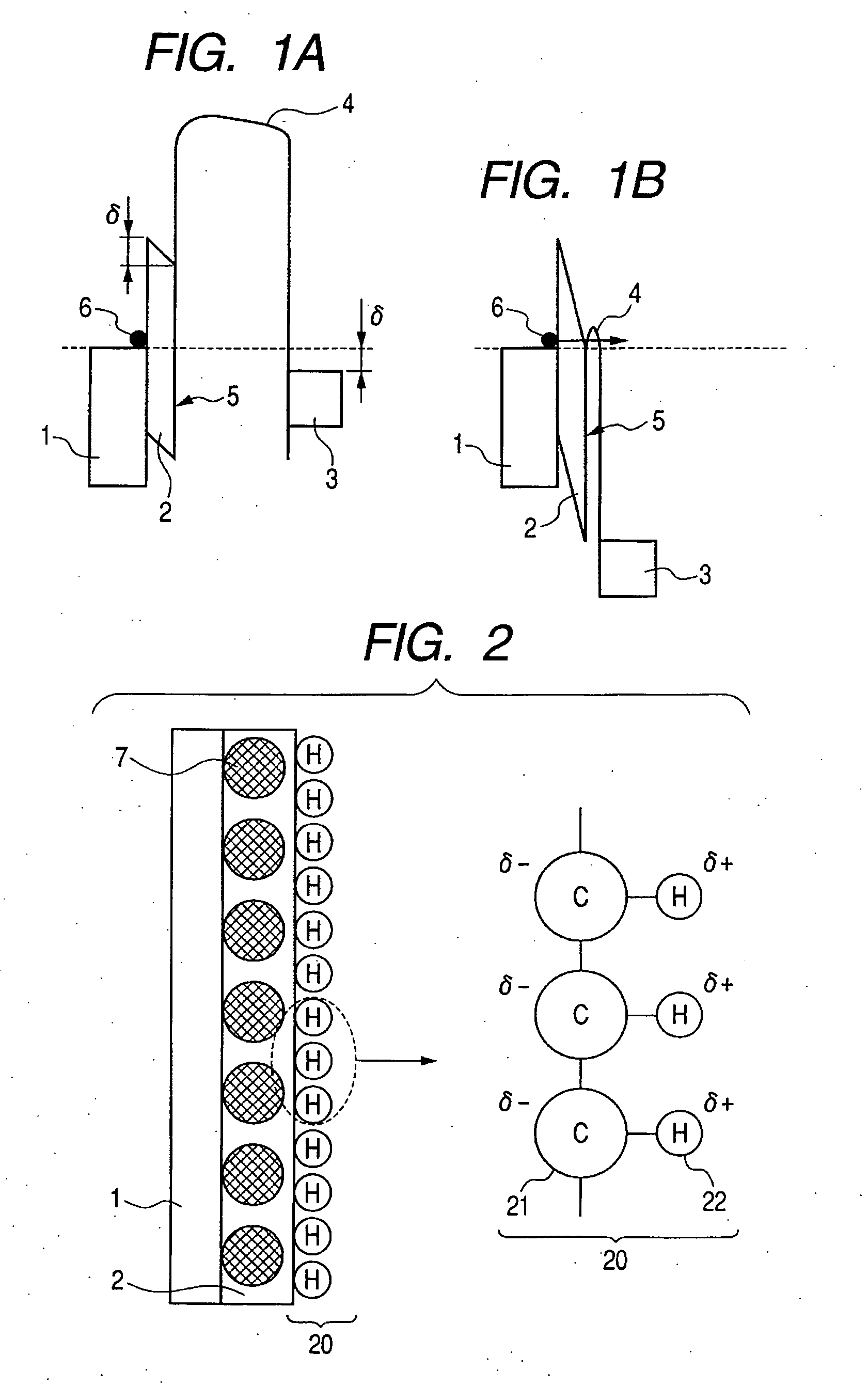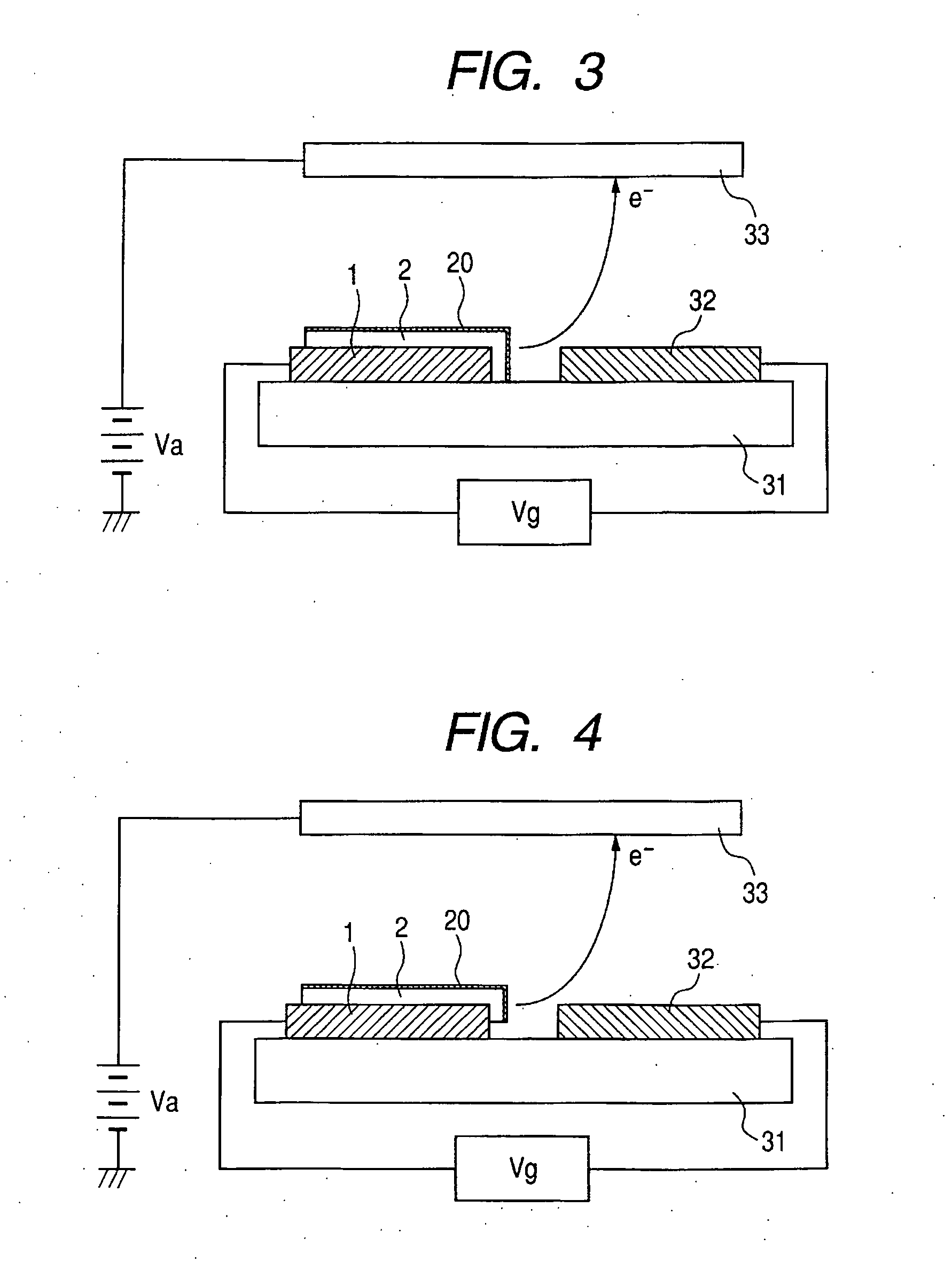Producing method for electron-emitting device and electron source, and image display apparatus utilizing producing method for electron-emitting device
a technology of electron emission device and producing method, which is applied in the manufacture of electrode systems, electric discharge tubes/lamps, and discharge tubes luminescent screens, etc., can solve the problems of reducing the contrast of displayed images, difficult control of electrons, and difficult to produce, and achieves convenient and fast production. , the effect of reducing the cost of production
- Summary
- Abstract
- Description
- Claims
- Application Information
AI Technical Summary
Benefits of technology
Problems solved by technology
Method used
Image
Examples
example 1
[0146] An electron emitting film was prepared according to the producing method shown in FIGS. 17A to 17D.
[0147] Quartz was employed as the substrate 31, which was rinsed well and subjected to formation of a TiN film of a thickness of 500 nm as the cathode electrode 1 by sputtering (FIG. 17A). The employed film forming conditions were as follows: [0148] Rf power source: 13.56 MHz [0149] Rf power: 7.7 W / cm2 [0150] gas pressure: 0.6 Pa [0151] gas atmosphere: N2 / Ar (N2:10%) [0152] substrate temperature: room temperature [0153] target: Ti
[0154] Then, on the cathode electrode 1, Pt eloctroconductive particles 7 were formed, as shown in FIG. 17B, by sputtering under following conditions: [0155] Rf power source: 13.56 MHz [0156] Rf power: 300 W [0157] gas atmosphere: Ar [0158] substrate temperature: 150° C. [0159] target: Pt
[0160] An observation of the surface of the cathode electrode 1 under an electron microscope revealed that fine Pt particles of an average particle size of 10 nm wer...
example 2
[0176] An insulation layer 2 of the present invention including electroconductive particles 7 and provided with a dipole layer 20 was prepared according to the producing method shown in FIGS. 17A to 17D.
[0177] Quartz was employed as the substrate 31, which was rinsed well and subjected to formation of a W film of a thickness of 500 nm as the cathode electrode 1 by sputtering (FIG. 17A).
[0178] Then, on the cathode electrode 1, Co electroconductive particles 7 were formed, as shown in FIG. 17B, by sputtering under following conditions: [0179] Rf power source: 13.56 MHz [0180] Rf power: 300 W [0181] gas atmosphere: Ar [0182] substrate temperature: 150° C. [0183] target: Co
[0184] An observation of the surface of the cathode electrode 1 under an electron microscope revealed that fine Co particles of an average particle size of 6 nm were formed with a density of 1×106 / mm2 on the cathode electrode 1.
[0185] Then SiO2 was deposited on the cathode electrode 1 by 5 nm by sputtering to form...
example 3
[0197] As in Example 1, quartz was employed as the substrate 31, which was rinsed well and subjected to formation of a TiN film of a thickness of 500 nm as the cathode electrode 1 by sputtering.
[0198] Then on the cathode electrode 1, a Pt film of a thickness of 15 nm was formed by sputtering under following conditions: [0199] Rf power source: 13.56 MHz [0200] Rf power: 300 W [0201] gas atmosphere: Ar [0202] substrate temperature: room temperature [0203] target: Pt
[0204] Then the Pt film was heated in a hydrogen atmosphere to form granules. An observation of the surface of the cathode electrode 1 revealed that Pt particles of an average particle size of 20 nm were formed with a density of 4×107 / mm2 on the cathode electrode 1.
[0205] Then a carbon film was formed by inclined evaporation on the cathode electrode 1 and the Pt particles 7, thereby forming an insulation layer 2 of a carbon film. The carbon film was formed on the electroconductive particles 7 and the cathode electrode 1,...
PUM
 Login to View More
Login to View More Abstract
Description
Claims
Application Information
 Login to View More
Login to View More - R&D
- Intellectual Property
- Life Sciences
- Materials
- Tech Scout
- Unparalleled Data Quality
- Higher Quality Content
- 60% Fewer Hallucinations
Browse by: Latest US Patents, China's latest patents, Technical Efficacy Thesaurus, Application Domain, Technology Topic, Popular Technical Reports.
© 2025 PatSnap. All rights reserved.Legal|Privacy policy|Modern Slavery Act Transparency Statement|Sitemap|About US| Contact US: help@patsnap.com



